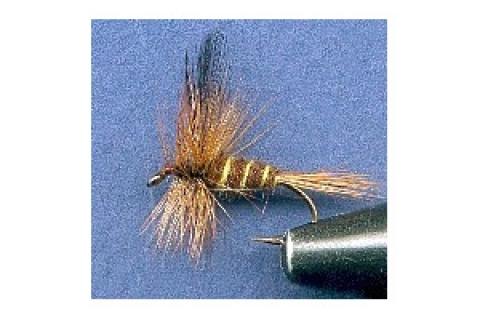
 The third part to this blog series on fly proportions has to deal with dry flies. Out of all the different patterns a fly tier has to play with, dry flies have to be the most standardized. The dry fly in general is supposed to be a representation of an adult aquatic invertebrate that has hatched off the water. The special characteristics to these flies is that they are tied with a vertical hackle (or horizontal hackle as seen with parachute patterns) that allow these flies to ride on the water's surface. Dry flies are some of the most versatile, productive and fun flies to fish. Get acquainted with the respected proportions and have fun tying your favorite dries.
The third part to this blog series on fly proportions has to deal with dry flies. Out of all the different patterns a fly tier has to play with, dry flies have to be the most standardized. The dry fly in general is supposed to be a representation of an adult aquatic invertebrate that has hatched off the water. The special characteristics to these flies is that they are tied with a vertical hackle (or horizontal hackle as seen with parachute patterns) that allow these flies to ride on the water's surface. Dry flies are some of the most versatile, productive and fun flies to fish. Get acquainted with the respected proportions and have fun tying your favorite dries.
Anatomy of the Standard Dry Fly
- Tail — The tail should be the length or one and a half times the length of the body (the one exception here is mayfly patterns where the tail is 2x the hook shank length).
- Wing — The wing should measure twice the length of the hook gape.
- Body — The body for dry flies should measure two-thirds the length of the hook shank and taper from the hook eye to the hook barb.
- Rib — The rib for dry flies depends on the material used and the length of the hook shank. In most cases ribs in dry flies use somewhere between 3-6 wraps.
- Hackle — The length of the hackle fibers on dry flies should measure one and a half times the hook gape. The hackle width should be around one third of the third of the hook shank.
- Head — The head should be 2-5 thread wraps wide (or as small as possible while still holding the hackle in place securely).
Anatomy of the Parachute Dry Fly
- Tail— The tail should be the length or one and a half times the length of the body (the one exception here is mayfly patterns where the tail is 2x the hook shank length).
- Wing— The wing should measure twice the length of the hook gape.
- Post— The post should measure one and a half times the hook gape.
- Body— The body for dry flies should measure 4/5 's the length of the hook shank and taper from the hook eye to the hook barb.
- Rib— The rib for dry flies depends on the material used and the length of the hook shank. In most cases ribs in dry flies use somewhere between 3-8 wraps.
- Hackle — The length of the hackle fibers on dry flies should measure one and a half times the hook gape. The hackle width should be around one third of the third of the hook shank.
- Head — The head should be 2-5 thread wraps wide (or as small as possible while still holding the hackle in place securely).
- 4951 views

